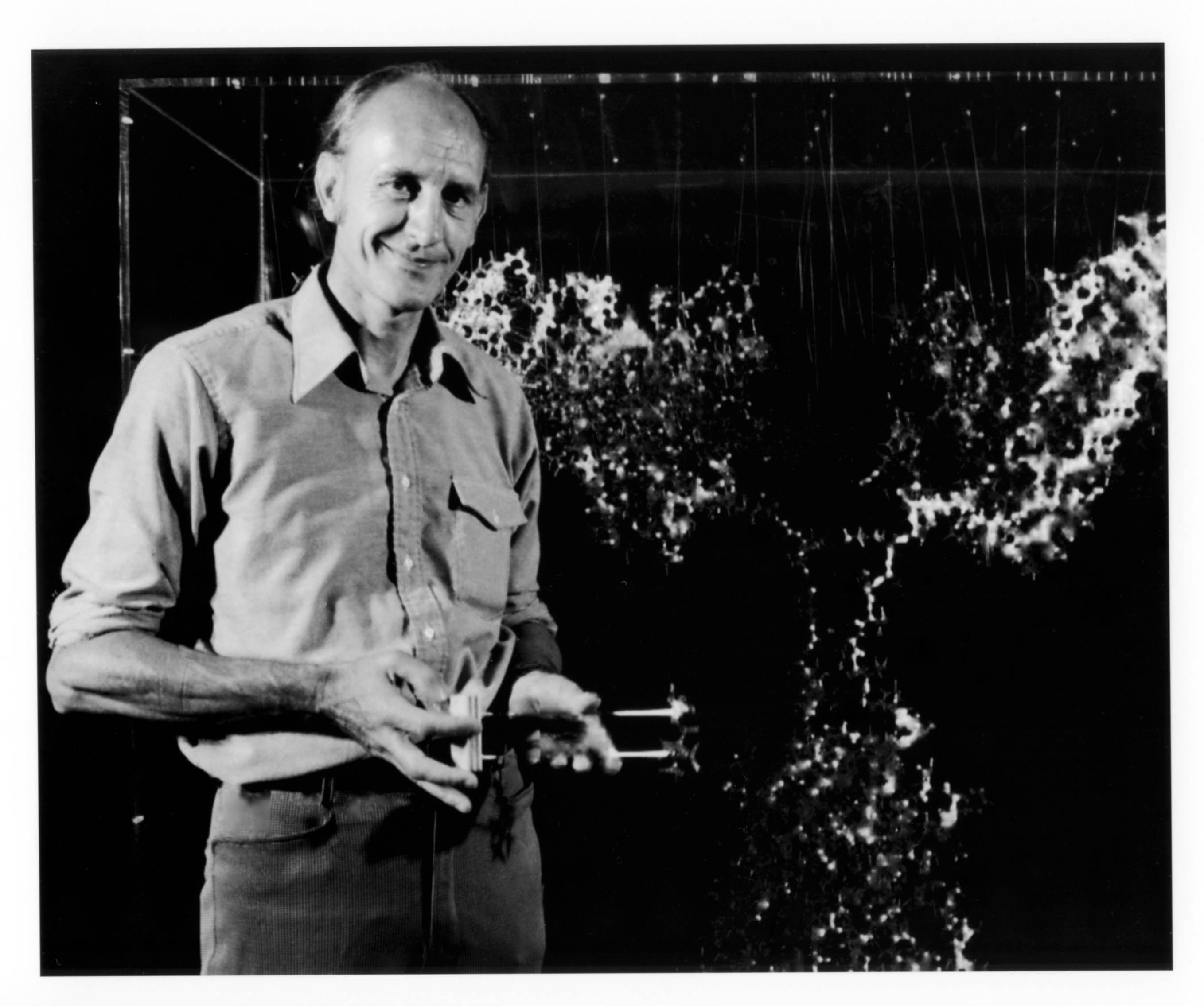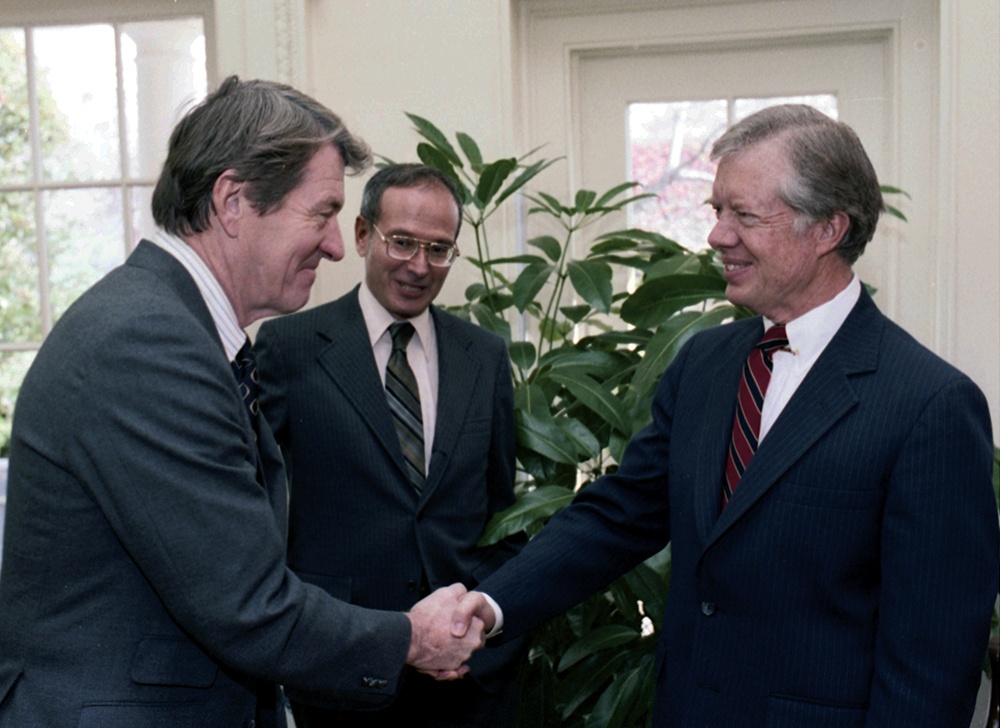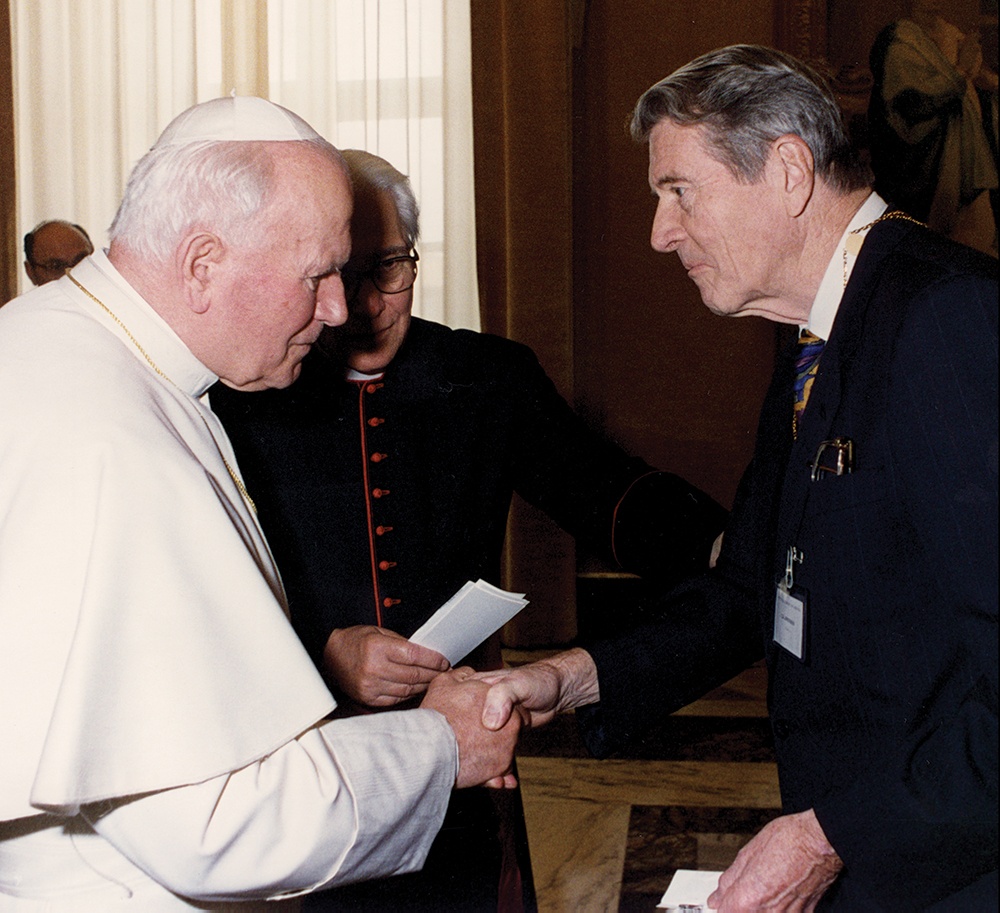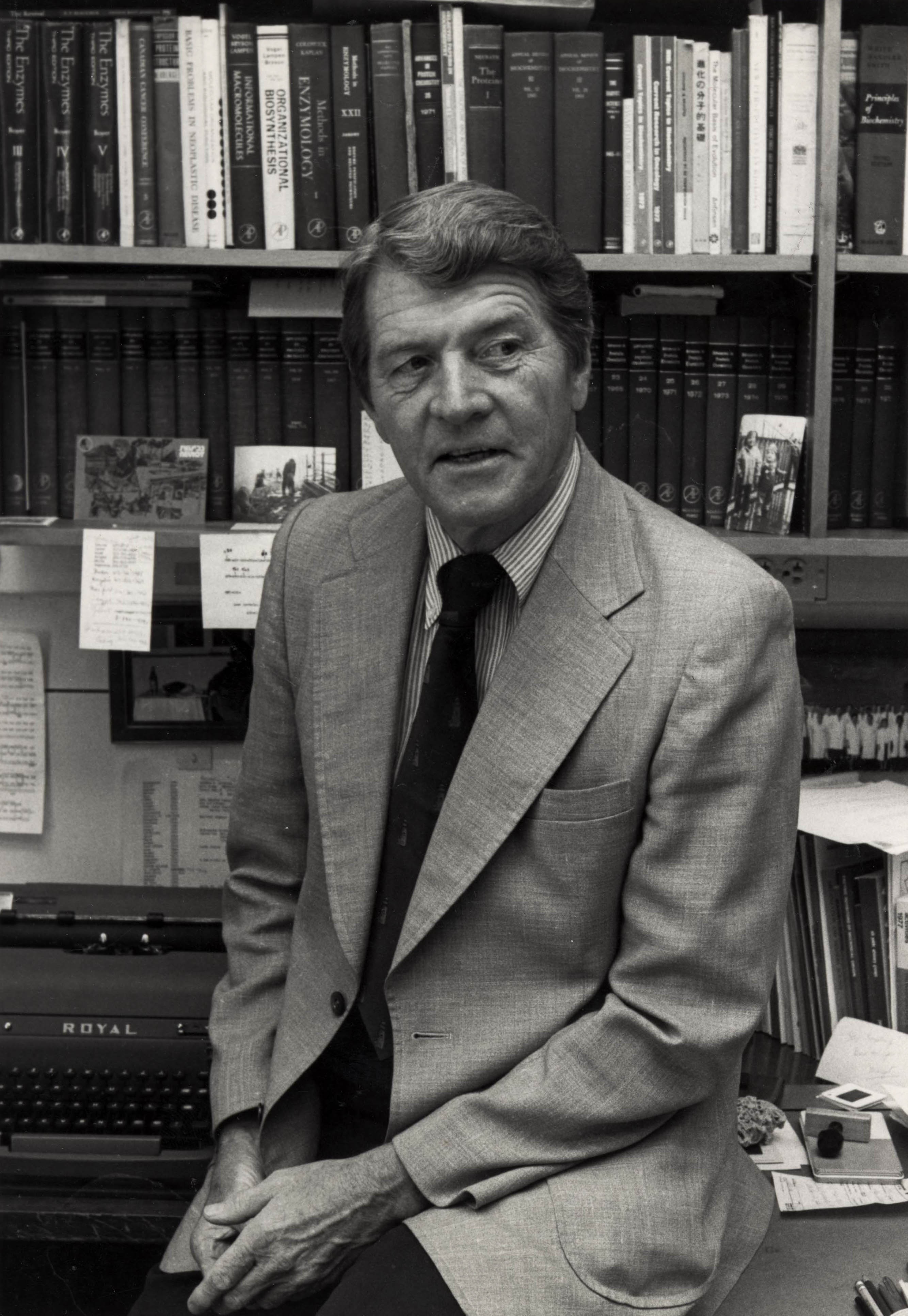...
| Span | ||
|---|---|---|
| ||
| National Library of Medicine |
Educating Scientists for the Future
| Caption |
|---|
David Davies with a molecular model. |
| Credit |
|---|
ONMH, Stetten Museum of Medical Research |
During the 1960s, Anfinsen and David Davies (above) held evening seminars on protein chemistry for NIH Research Associates. For the seminars they built large three- dimensional models of several proteins. The seminars provided training in specialized research methods.
| Credit |
|---|
National Library of Medicine |
In 1959, Anfinsen was one of 12 founders of the Foundation for Advanced Education in the Sciences (FAES) at the NIH. The FAES seeks to create a collegial environment at the NIH by providing educational and professional services for the scientific community. The FAES has offered hundreds of courses and biotechnology training seminars over the years and has trained more than 16,000 scientists.
A Voice for Scientists
Anfinsen employed his renown as a Nobel Laureate to amplify the voices of scientists and communities whose own voices were diminished, or worse, muted entirely.
In 1978, Anfinsen chaired the Committee on Human Rights of the National Academy of Sciences, which stated, “The plight of those few on whose behalf the Committee speaks and acts, however, is symbolic of that of many others from all walks of life.” (Quote from National Academy of Sciences Committee on Human Rights: Results of a Visit to Argentina and Uruguay, April 1978.)
| Caption |
|---|
President Jimmy Carter congratulated Anfinsen at the White House on his Nobel award. |
| Credit |
|---|
Courtesy of the National Archives. Photo by William "Bill" Fitz-Patrick. |
Anfinsen thought that scientists were directly responsible for the social repercussions of their work. He was involved in the Partial Test Ban Treaty (1963) and protested the Gulf of Tonkin Resolution (1964) which began the U.S. involvement in the Vietnam War. Anfinsen not only wrote letters and signed petitions to promote human rights, particularly those of scientists, he went to other countries to investigate reports of human rights violations.
| Caption |
|---|
Pope John Paul II greeted Anfinsen at the Vatican. |
| Credit |
|---|
National Library of Congress. Photo by Fotografica Felici |
Anfinsen's Typewriter Advocacy
| Caption |
|---|
Anfinsen sits by his humble Royal typewriter, on which he wrote many letters of support and protest—his scientific and humanitarian missives, as well as his scientific papers. |
| Credit |
|---|
National Library of Medicine |
Read the letters that he signed in campaigns to free scientists in the Soviet Union, Turkey, and Brazil, and learn about the stressful trip to Uruguay and Argentina that, unfortunately, caused him to take up smoking again.
Igor Uspensky
Igor Uspensky was a Russian entomologist who wished to emigrate to Israel with his wife Inna and son. Uspensky was the senior research scientist of the Martsinovsky Institute of Medical Parasitology and Tropical Medicine in Moscow from 1961-1982. During this time, the Soviet Union attempted to limit the emigration of Jews. The family’s 1981 application was denied by Soviet authorities on the grounds that Inna’s brother Alexander Ioffe, a mathematician, had access to state secrets. Ioffe was allowed to leave in 1988, however, and the Uspenskys applied for emigration again, which they secured in 1989. Igor Uspensky joined the Hebrew University in Jerusalem.







